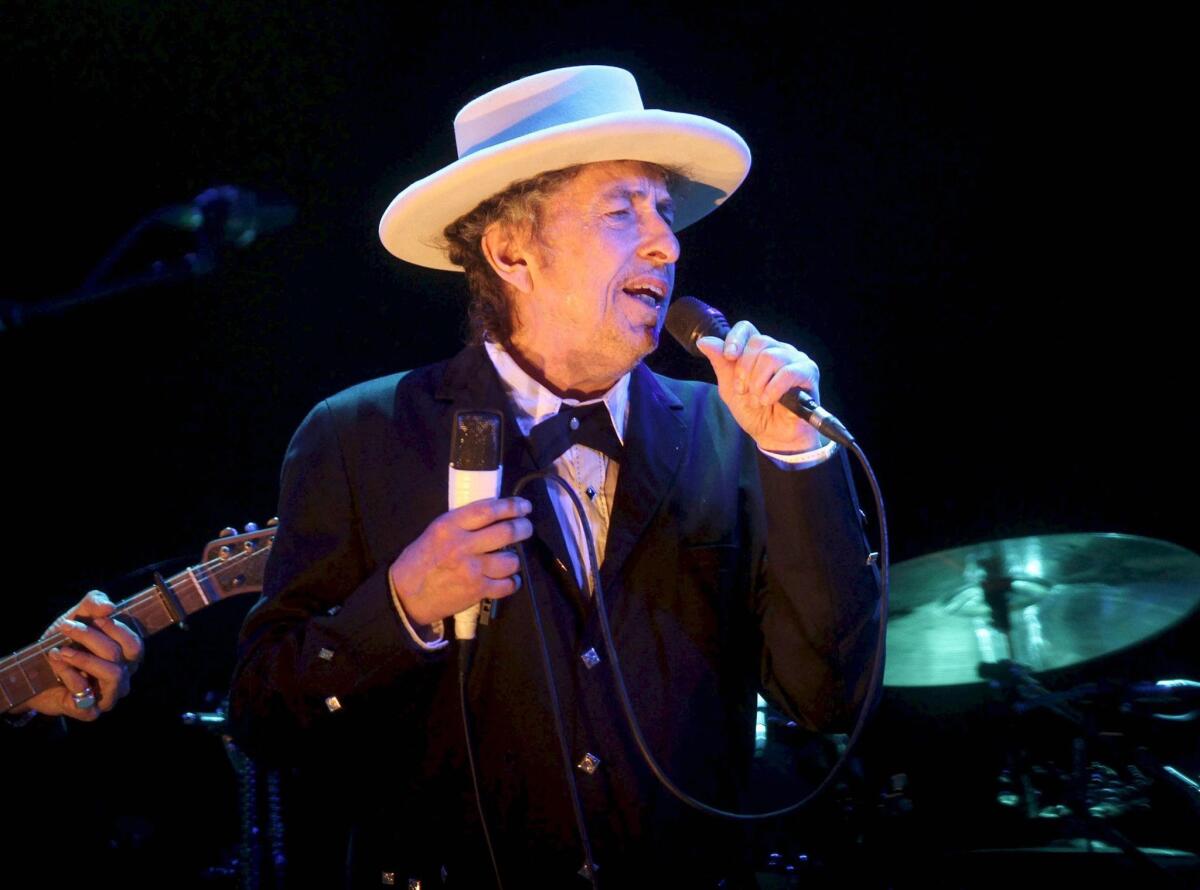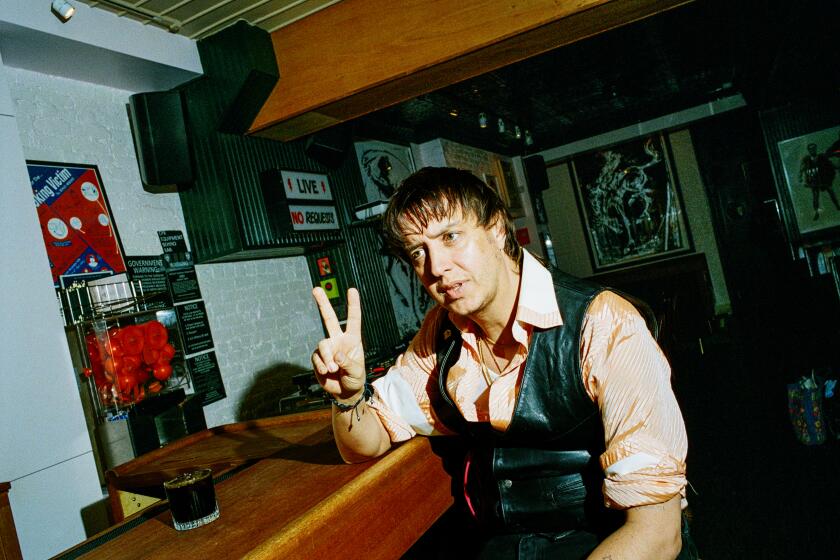Celebrating the late career work of Nobel Prize winner Bob Dylan, when he started getting obsessed with death

Bob Dylan performing at the Benicassim International Music Festival in Spain in 2012. The songwriter has won the Nobel Prize for literature.
One way to appreciate the breadth of Bob Dylan’s work is to start with a pair of often-overlooked curios he issued in the early 1990s.
Ignore the stuff that changed the times, upended expectations — and occasionally baffled his devotees — to focus on the artist’s output beginning with his two all-acoustic albums of old blues songs, “Good as I Been to You” and “World Gone Wrong.”
In retrospect, those early records of the 1990s can be seen as a creative reboot that drove Dylan into a zone that produced some of his greatest work. After that, he started wrestling with different themes and exploring a new sound palette.
The artist had recently turned 51 when he released “Good as I Been to You” in 1992. He’d worked through a 1980s creative phase that saw him wrestling with religion to open the decade and drenching his work with modern production techniques to end it.
It was his 28th studio album and first all-acoustic record since 1964. He covered traditional blues and folk songs made popular in the early 20th century by artists including Stephen Foster and Tommy McClennan. Many of the songs were hopeful. “Blackjack Davey” recounts an affair that transcends race and class. “Jim Jones” is an ode to a rebel on a mission.
For his follow-up, “World Gone Wrong,” Dylan focused on dark blues songs about murder, betrayal and existential dread. He sang of being “ragged and dirty” and of having “blood in my eyes” for a would-be lover. The last song on that album, “Lone Pilgrim,” is set in a graveyard, where a dying man is experiencing an epiphany.
He took nearly four years — at the time his longest period of silence since his first album — to release a follow-up to “World Gone Wrong”; the breathtaking “Time Out of Mind” was the result, his first collection of original songs in more than seven years. If the acoustic albums served as a springboard into an exploration of mortality, “Time Out of Mind” was the swan dive into the abyss.
“Yesterday everything was going too fast/ Today, it’s moving too slow,” he sings on “Standing in the Doorway,” admitting that he’s “got no place left to turn” and “nothing left to burn.” On “Not Dark Yet,” he admits, “My sense of humanity has gone down the drain/ Behind every beautiful thing there’s been some kind of pain.”
Gone is the distance between singer and song: This is man seeming to put it all on the table. Grimness awaits no matter what. He doesn’t seem interested in remaining forever young. Rather, Dylan revels at having the freedom to wallow.
“Love and Theft” is equally overwhelming, if at times more optimistic. If he sounded suicidal on “Time Out of Mind,” “Love and Theft” is positively bipolar. On “Moonlight,” he offers hope in the form of rhymed stanzas that seem an echo of “Good as I Been to You” when he sings of songbirds, flowers and the twilight.
A few songs later on “Sugar Baby,” the birds may as well be dead, when he confesses that “every moment of existence seems like some dirty trick/ Happiness can come suddenly and leave just as quick/ Any minute of the day the bubble could burst.”
Characterizing his work through the ’00s is no easy task. The only consistency is how uncompromising and unflinching these records are.
The pace of his studio albums certainly slowed. He took five years between “Love and Theft” and “Modern Times,” and three years after that, he issued the bluesier “Together Through Life.” Each shows a writer delving into contemporary issues and universal themes with typically sharp wit.
“It’s All Good,” for example, indicts an ambivalent culture: “Big politician telling lies/ Restaurant kitchen, all full of flies/ Don’t make a bit of difference/ Don’t see why it should/ But it’s all right, ‘cause it’s all good.”
His most recent album of originals, “Tempest,” could warrant an entirely different appreciation, a dense but beautiful record whose title track is a 13-plus-minute retelling of the sinking of the Titanic.
The bookends to this remarkably innovative late period are Dylan’s most recent pair of records, “Shadows in the Night” and “Fallen Angels.” Like the early ’90s folk records, these don’t feature any Dylan originals.
Given the man behind the music, that doesn’t seem like an accident. Dylan dips way back for his inspiration, except that his focus isn’t on ragged blues but the sophisticated songcraft of Tin Pan Alley writers such as Irving Berlin, Harold Arlen and Hoagy Carmichael.
It’s almost as if he were making a closing argument for the previous nine studio albums, one that connects the rural craft of 20th century folk and blues with the high society pop writers who, while writing during that same period, could have been living on another planet.
It’s all the same world, he seems to argue after 50-plus years of work. We’re all connected by primal emotions — love, hate, fear, sadness, joy, desire and disdain. The only sane response is to explore them all.
There’s a lot of terrible music out there. For tips on the stuff that’s not, follow Randall Roberts on Twitter: @liledit
ALSO
Critics wonder if Bob Dylan really needs a Nobel Prize
Bob Dylan, interpreter: Seven of the artist’s greatest covers
More to Read
The biggest entertainment stories
Get our big stories about Hollywood, film, television, music, arts, culture and more right in your inbox as soon as they publish.
You may occasionally receive promotional content from the Los Angeles Times.








